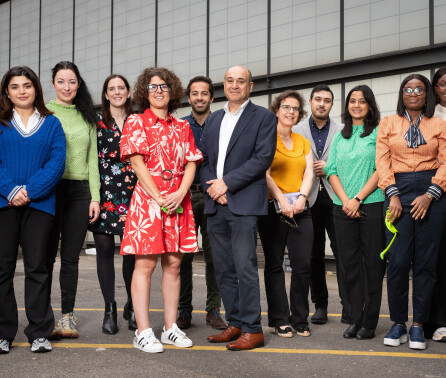The Sustainable Gas Institute (SGI) was a 10-year Imperial College initiative to examine the role and impact of natural gas, hydrogen and biomethane in low-carbon energy systems of the future.
Key research areas at the SGI included:
Energy Systems Modelling (ESM) to examine how gas fuels fit together with other clean energy technologies. SGI research deployed a range of computer simulation tools to examine best-fit whole-systems energy solutions at a range of geographic scales; from local areas up to the whole world. SGi research founded the MUSE model, the first agent-based Integrated Assessment Model.
Emissions, Environment and Life-Cycle Assessment research themes focussed on the escape of methane (CH4) from across the natural and biogas-supply chains and the creation of carbon dioxide (CO2) when gas is burned. SGI research also extended to broader Life-Cycle Assessment (LCA) studies, including an Industrial Decarbonisation Research and Innovation Centre-funded investigation into the unintended consequences of decarbonising the UK's chemical, steel and cement sectors.
SGI research efforts have contributed to supporting the ongoing energy debate with robust evidence, primarily via a White Paper Series, which provided a benchmark for discussion on the role of gaseous fuels in the near and long term. They remain available to download:
 |
White Paper 1: Methane and CO2 emissions from the natural gas supply chain Published in September 2015, this was a comprehensive review of the available data on both methane and carbon dioxide emissions from the natural supply chain. Find out more about this paper. |
 |
White Paper 2: Can technology help to unlock ‘unburnable carbon’? The report examines the current state of knowledge regarding ‘unburnable carbon’ and the extent to which Carbon Capture & Storage can unlock hydrocarbon reserves without endangering climate change targets. Find out more about this paper. |
 |
White Paper 3: A greener gas grid: What are the options? SGI White Paper 3 looks at the evidence surrounding the decarbonisation potential of existing gas network infrastructure. This paper investigates recent research that suggests options to decarbonise the existing gas grid might be competitive under certain circumstances. Find out more about this paper. |
 |
White Paper 4: Can natural gas reduce emissions from transport? This report investigates the emissions of greenhouse gas emissions and air pollutants arising in both heavy goods vehicles and shipping. The white paper assessed the scope for natural gas to reduce these emissions from current levels. Find out more about this paper. |
 |
White Paper 5: The flexibility of gas - what is it worth? |
 |
White Paper 6: The best uses of gas within Paris Climate targets There are significant natural gas resources relative to our atmosphere's capacity to cope with the emissions from their supply chain and ultimate combustion. In a world where these resources are abundant, but their unabated combustion is constrained by climate targets, what is the best thing to do with natural gas? Find out more about this paper. |
News
All News19 January 2022
How to best model energy transitions in developing countries?



